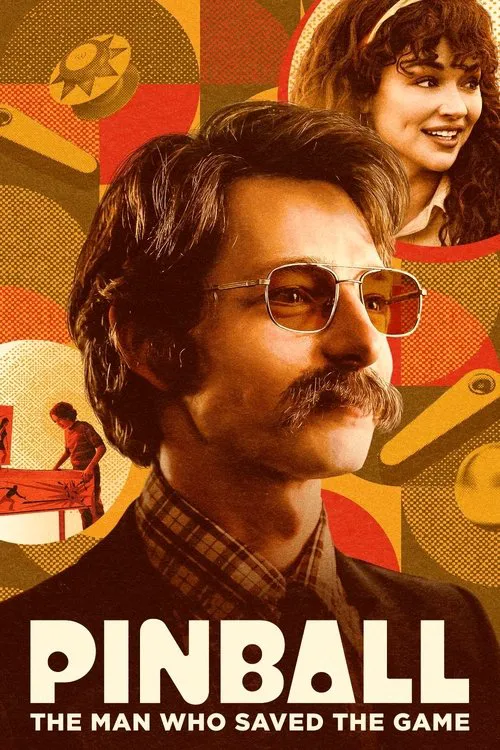Pinball: The Man Who Saved the Game

Plot
In the early 1960s, pinball was not just an entertainment machine, but an obsession for many in the city of New York. The game of skill and chance had captured the hearts of millions, but its popularity was met with disapproval from the authorities, who deemed it a nuisance and a threat to public morals. The city had banned pinball in 1925, and over the next 35 years, no one had been able to find a way to reverse the decision. Enter Roger Sharpe, a writer and self-proclaimed pinball wizard, who was determined to shake things up. Born in Canada in 1931, Sharpe had a passion for the game, which he had developed in his youth. He spent countless hours in arcades, mastering tricks and strategies, and even wrote a book on the subject, "The Pinball Book." Sharpe's love for the game was more than just a hobby; it was a way of life. Despite his Canadian roots, Sharpe had moved to New York, where he began to make a name for himself as a writer and a pinball enthusiast. He wrote articles for pinball publications, and even appeared on local TV shows to talk about his favorite pastime. But Sharpe's dream was to not only promote pinball, but to bring it back to the city that had outlawed it for so long. Sharpe began to gather a small group of allies, including pinball machine owners, arcade operators, and other enthusiasts who shared his passion. Together, they formed the Pinball Association of America, which aimed to lobby the city to overturn the ban. Sharpe, who saw himself as a sort of " Robin Hood of pinball," also began to speak out against the ban, arguing that it was an infringement on people's freedom to enjoy a harmless game. The battle to lift the ban was not going to be easy, however. Opponents of pinball saw it as a corrupting influence on young people, and a way for gangsters to launder money. They also pointed out that many of the machines had "loopholes" that allowed players to exploit them, leading to the possibility of cheating and theft. Sharpe, who believed that the machines were just as much a part of the problem as the player, argued that this was a "scapegoating" tactic, designed to deflect attention from the real issues. One of Sharpe's key allies in the fight to lift the ban was a city councilman, who saw an opportunity to win over a new constituency of pinball enthusiasts. However, as the campaign gained momentum, Sharpe realized that his opponents were not just a bunch of naysayers; they were determined to maintain the status quo for ideological reasons. The pinball lobby, comprised of influential manufacturers and vendors, had become a powerful force in city politics, and they would stop at nothing to protect their interests. Despite the odds, Sharpe continued to push for change. He and his allies organized rallies and petitions, and even convinced some of New York's most influential newspapers to run editorials in support of lifting the ban. But just as it seemed like progress was being made, Sharpe faced a setback: his own testifying at a public hearing. At the hearing, Sharpe was asked to demonstrate his proficiency with a pinball machine. With a nervous excitement, he stepped up to the table and began to play. On his very first shot, he hit the high score light, sending the packed room into stunned silence. The machine had been "fixed" - not by Sharpe or anyone in his camp, but by a rival operator who was determined to discredit Sharpe's claims. Sharpe, however, kept calm and carried on, using his skills to score an impressive 89% on his first shot. The public, and the councilmen, were stunned. The demonstration had turned the tide of the debate. For the first time in 35 years, the ban on pinball looked like it might actually be overturned. Sharpe and his allies seized the momentum, lobbying even harder for change. And on January 2, 1976, the New York City Council voted to end the ban on pinball machines, a victory for Sharpe, his fellow enthusiasts, and the city's many pinball fans. With the ban lifted, Sharpe was hailed as a hero, his name etched alongside the legendary figure of Marvin Gardner, one of the greatest pinball players of all time. Sharpe, however, remained humble, attributing his victory to the dedication and perseverance of the pinball community, and to the support of his allies. As the first pinball machines rolled back into city arcades, Roger Sharpe knew that his fight had not been just about pinball, but about the right to enjoy a hobby, free from the constraints of arbitrary government rules. Sharpe continued to write about pinball, even as it became a staple of urban entertainment. He watched as the city's first pinball tournaments were organized, and saw the emergence of the first pinball league. And in 1978, New York even staged its first major pinball championship, a tournament that drew enthusiasts from all over the country. For Sharpe, the battle to save pinball had never been just about the game; it was about the right to play, to challenge oneself, and to have fun, all within a framework of rules and respect for others. As he looked out upon the colorful chaos of a bustling pinball arcade, Sharpe knew that this was a victory not just for pinball fans, but for anyone who believed in the power of games to bring people together, and to bring out their hidden talents. And as the machines whirred and spun, their bright lights shining like tiny suns, Roger Sharpe smiled, knowing that the future of pinball was secure, and that its true magic would forever be in the hands of those who knew how to play.
Reviews
Recommendations




